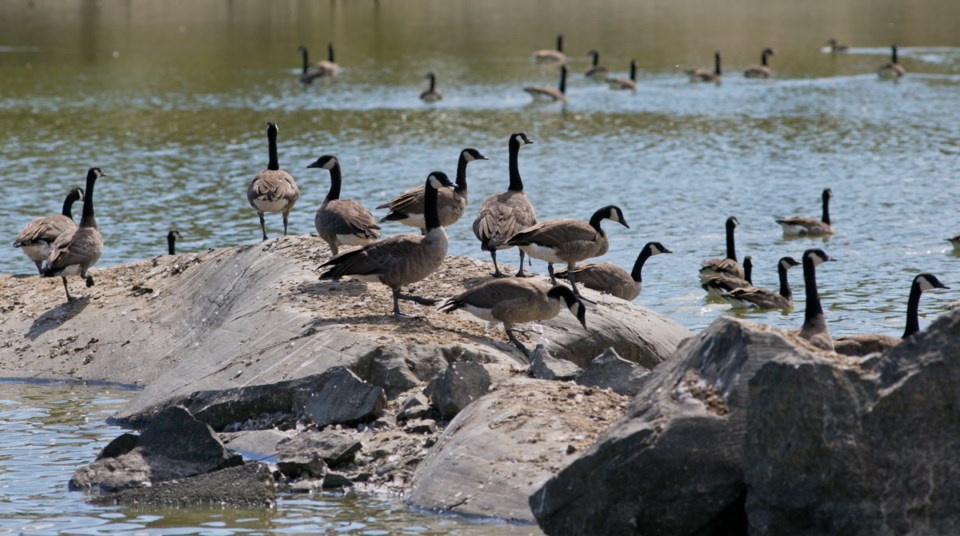As unpleasant as it is to contemplate killing hundreds of Canada geese, the alternative is even less pleasant. When nature is running amok, doing nothing can result in significant environmental damage.
Last month, the city of Parksville rounded up and killed 484 Canada geese. It was not a decision made lightly — the city has been wrestling with the goose problem for years. Various measures have been tried to reduce the overabundance of geese — including addling eggs, scaring the birds off with dogs and employing a falconer — yet the numbers kept increasing.
The decision to kill the geese, says Mayor Marc Lefebvre, was made with input from experts, including environmentalists concerned about the damage being done by the geese to river estuaries.
Many human-wildlife conflicts are the result of people taking over or destroying the habitat of birds and animals. That’s not the case with the geese that were culled.
Unlike the migratory birds that fly in their thousands over 91ԭ�� Island as they head for nesting grounds, the problem geese are an invasive species. As in other parts of Canada, resident geese were introduced on 91ԭ�� Island in the 1970s to increase hunting opportunities. Unlike the geese, that plan went south — the geese took a liking to urban areas with an abundance of nesting spots, lots of vegetation to graze and no predators, such as hunters with shotguns.
Between 1970 and the end of the 20th century, the number of Canada geese in North America increased five-fold, largely due to the massive increase in the number of non-migratory geese. In 1970, resident geese were only 18 per cent of the North American population; now they make up about 70 per cent.
The geese love grassy areas, and so are a huge problem on golf courses, lawns, parks and playgrounds. Their droppings are more than a nasty inconvenience — goose feces harbour an array of potentially dangerous bacteria.
The geese are devastating to food crops. A flock can descend on a field of lettuce or corn and destroy it in hours. What is not eaten is trampled. Some farms on the Saanich Peninsula report annual losses of $40,000 to $60,000, adding to the many difficulties farmers in the region already experience.
In the wild, the non-migratory geese are even more harmful.
“Over the past two decades, Canada geese have overgrazed the mid-Island estuarine marshes, in particular, the Englishman, Little Qualicum, Craig Creek and Nanoose estuaries,” says a statement released by the city of Parksville.
In 2010, retired 91ԭ�� Wildlife Service biologist Neil Dawe told the Globe and Mail that resident Canada geese were the cause of serious and widespread habitat degradation. He said the geese in the Little Qualicum River estuary annually consumed 15 tonnes of a type of sedge vital to the health of the ecosystem.
Lush marsh areas, once abundant with wildlife, have become mudflats. Erosion, silting and the removal of protective plant cover have reduced the populations of fish, insects and crustaceans.
Dawe’s solution? Eradication of resident Canada geese from 91ԭ�� Island. If that sounds drastic, remember that it came from a person who spent three decades managing national bird sanctuaries and who was the co-author of the four-volume The Birds of British Columbia.
“I don’t like doing it. They are beautiful birds,” Dawe told the Globe and Mail. “But what I am saying is we messed up and it’s urgent that we take action.”
The goose problem on 91ԭ�� Island was caused by humans. Humans need to solve the problem. The solutions aren’t pleasant or easy, but they are needed to prevent risk to humans, further damage to the urban environment and destruction of wildlife habit.



